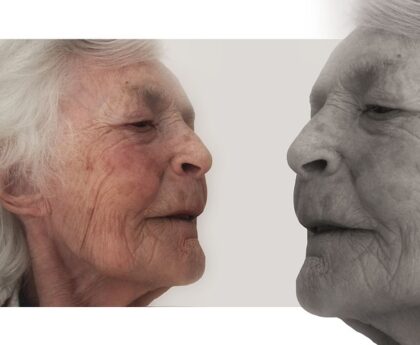The process by which damaged tissues or organs in the body are replaced or repaired naturally is referred to as regeneration. The capacity of different tissues in the human body to regenerate themselves varies, and some tissues are better equipped to do so than others. Regeneration potential differs from tissue to tissue. For instance, it is common knowledge that the liver possesses a remarkable capacity for regeneration, when compared to the restricted regenerative potential of the heart muscle. In this article, we will discuss some of the natural processes that can be used by the human body to repair cells that have died.
It is necessary to have a fundamental understanding of the factors that lead to the death of cells before delving into the numerous strategies for cellular regeneration. Cells can die for a number of different reasons, including physical damage, infection, the natural process of ageing, and even environmental factors like being exposed to chemicals or radiation. If the damage is too severe, the body may have to start the process of tissue regeneration from the beginning in order to repair the damage. As cells die, they can be replaced by surrounding healthy cells. Below are some of the ways to regenerate the body cells.
Exercise:
Exercising regularly is one of the most efficient ways to stimulate the body’s natural capacity for the regeneration of damaged cells. Participating in regular physical activity has been shown to boost the synthesis of growth factors and hormones, both of which promote the repair and regeneration of tissue. It has been demonstrated that exercise can increase the number of stem cells in the body. Stem cells are able to differentiate into a variety of cell types and can replace cells that have been injured or lost.
Exercise not only encourages the regeneration of cells, but it also has a host of other positive effects on one’s health, including an improvement in one’s cardiovascular health, an increase in one’s muscular strength, and a reduction in one’s risk of developing chronic diseases such as diabetes and cancer.
Nutrition:
It is absolutely necessary to consume a nutritious diet that is abundant in vitamins, minerals, and antioxidants in order to stimulate the body’s natural process of cell regeneration. Vitamins C, E, and beta-carotene are examples of nutrients that can help protect cells from harm and stimulate cell regeneration. Consuming a diet that is abundant in fruits, vegetables, cereals that are whole, and lean proteins can supply the body with the nutrients it requires in order to heal and regenerate damaged tissues.
In addition to following a nutritious diet, it is essential to maintain proper hydration by consuming a sufficient amount of water on a daily basis. Water plays an important role in the transportation of nutrients and oxygen to the cells, which is necessary for the cells’ ability to regenerate.
Sleep:
In order to promote cell regeneration throughout the body, getting a sufficient amount of restorative sleep is also essential. The body creates growth hormone when you are sleeping, which is a hormone that is necessary for the repair and regeneration of tissues. During sleep, the body is able to focus on healing damaged tissues while simultaneously conserving energy.
The disruption of the body’s natural circadian rhythm and the interference with the production of growth hormone can both have a negative impact on the body’s ability to regenerate cells after long periods of not getting enough sleep.
Meditation:
Because stress can cause the release of cortisol, a hormone that can harm cells and limit their ability to regenerate, stress can have a negative impact on the process of cell regeneration that occurs within the body. Meditation is a strong tool that can help reduce stress and promote relaxation, both of which can assist in supporting the regeneration of cells.
Research have indicated that the practise of meditation can boost the activity of telomerase. Telomerase is an enzyme that is crucial for maintaining the length of telomeres, which are protective caps located on the ends of chromosomes. Telomeres that are shorter than normal are related with both ageing and disease. Increasing the activity of telomerase can help protect cells from harm and enhance the regeneration of damaged cells.
Exposure to the cold
It has been demonstrated that exposing oneself to freezing temperatures, such as by taking a cold shower or submerging oneself in cold water, can stimulate the body’s natural ability to regenerate cells. Brown adipose tissue is a form of fat that is extremely metabolically active and may burn calories to generate heat. If you are exposed to cold, this can increase the production of brown adipose tissue.
It has been proven that brown adipose tissue promotes the regeneration of cells and tissues in addition to encouraging weight loss, which is a well-known benefit of this type of fat. Exposure to cold can also cause an increase in the synthesis of growth hormone and can stimulate the development of stem cells, both of which are necessary for the repair and regeneration of damaged tissue.
Acupuncture
Acupuncture is a form of traditional Chinese medicine that includes inserting very thin needles into certain spots on the body at various acupuncture points. It has been demonstrated that acupuncture can offer a broad range of health advantages.





